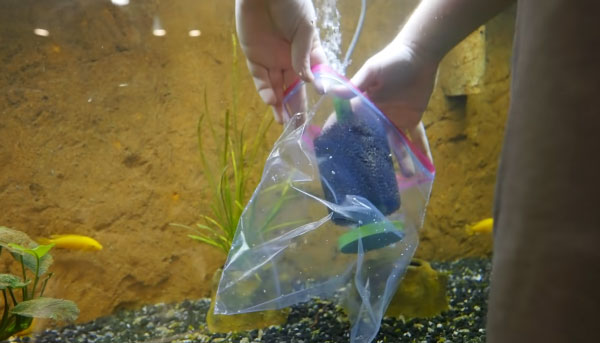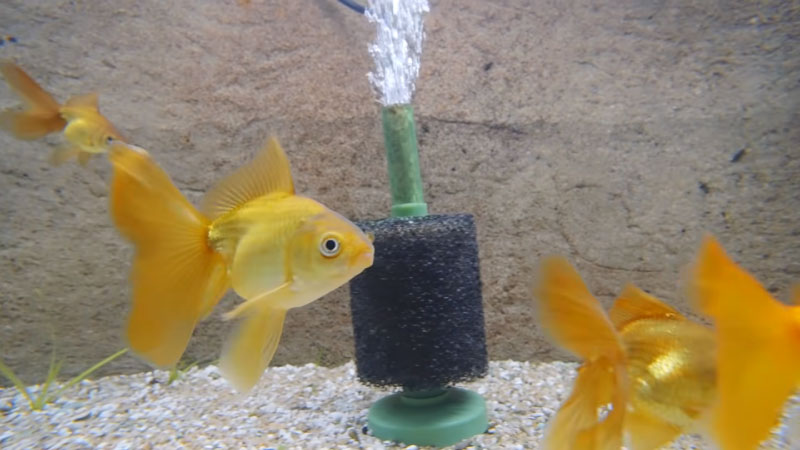Betta fish tank sponge filters are a rare breed of filter that works better than the rest. The problem is that they can get dirty easily, which causes water quality to decline in the tank.
You can’t really reach in there to clean it properly and scrub out any dirt or bacteria from inside without affecting the rest of your tank, or even injuring your pet fish.
But don’t worry, this article will guide you on how to clean filter sponge in fish tank?
How to Clean Filter Sponge in Fish Tank: Step by Step Guide

The sponge filter is an efficient way to filter and aerate the water of your betta fish tank. But sometimes, it’s hard to clean the sponge filter because it gets stuck on the sides and under the gravel. This can be frustrating because bettas need a clean, healthy environment to thrive.
The steps in the guide are easy to follow and can be done by anyone with basic knowledge of fish tanks.
Step 1: Remove all the plants from the tank
The first step in this process is to remove all the plants from the tank. This is necessary because it will make it easier for you to add water and insert them into their new home. If you don’t remove them, they may get stuck in your filter.
Step 2: Take out the filter

Filters are designed to remove impurities from the water. However, when they are taken out, the water can become cloudy and murky.
We’re going to take it out anyway because it’s easier to clean without it.
Step 3: Remove any debris that may be stuck on the filter
The debris may be stuck on the filter. The debris may consist of a lot of things like dirt, dust, and sand.
The debris can be removed by using a vacuum cleaner with a hose attachment. It is important to clean the filter regularly so that it can last for many years.
Step 4: Rinse out filter with clean water

This is the last step in the process of cleaning your filter. It is important to rinse out your filter with clean water before you put it back into the tank.
This will help to remove any dirt or sediment that may have collected inside of your filter.
This step is to wash out the filter with clean water. The final step in the process of making coffee is to rinse out the filter with clean water.
Step 5: Replace filter and plant back in tank
Filters are a common part of any aquarium, and they help keep the water clean and healthy. They are also an important part of maintaining the tank.
But sometimes filters can be overused, which causes them to become less effective. This is why it is important to replace them regularly, as well as maintain the tank properly.
The process of replacing filters is very simple and should not take more than 5 minutes for most tanks.
How to Clean the Aquarium Filter Pad?
Cleaning a filter pad is a tedious task that can be made easier with the help of an aquarium cleaner.
Cleaning an aquarium filter pad is not always easy. It can be a tedious task that takes up to an hour or more. This is where the use of an aquarium cleaner comes in handy.
There are different ways to clean your filter pads, depending on what type of device you have.
Here are some methods that you can use: Using a vacuum cleaner with a hose attachment, remove all dirt and debris from the bottom of your tank before vacuuming.
The cleanser helps in removing all the dirt and debris from the filter pad and making it ready for reuse.
Use suction cups or suction cups with brushes to remove debris from your tank’s surface
How often to Clean Sponge Filter?
A fish tank sponge filter is a device that helps to keep the water clean and healthy. It has a filter that can be cleaned by removing the debris from the water.
When you clean it, you will need to remove the filter and rinse it with clean water. This can be done once every two weeks or more often if needed.
How Do You Clean a Sponge Filter Without Killing Bacteria?
A sponge filter is a type of filter that uses a porous material to trap particles from the water. It can be used in many different situations where you need to remove small particles from the water.
To clean your sponge filter without killing bacteria, you should rinse it with clean water before and after each use.
You should also replace it every six months or when it becomes clogged with debris.
Can I Clean Sponge Filter with Tap Water?
This is a question that most people have in mind when they are faced with a dirty and clogged-up sponge filter.
Generally, tap water is not recommended for cleaning sponges because it contains too many chemicals. However, some people use it to clean their sponge filters and get the job done.
What Happens if I Don’t Clean My Sponge Filter?
If you don’t clean your sponge filter, the water will start to smell and it will eventually overflow.
This is because the bacteria that are in the sponge filters can multiply and contaminate your water.
If this happens, you will have to replace your filter or find another way of purifying your water.
Frequently Asked Questions (FAQs)
How do you clean a pump sponge?
It is very important to clean a pump sponge after each use. It helps prevent bacteria from growing and spreading.
It is important to clean a pump sponge with soap and water before you use it again. You can also add some bleach if you want extra protection against bacteria.
Does sponge filter clean fish poop?
Sponge filters are used in fish tanks to help keep the tank clean. They are made of a porous material that traps and removes debris while also providing oxygen and food for the fish.
The answer is yes, sponge filters can clean fish poop.
Can you reuse a sponge filter?
This is a question that many people have asked and the answer is, “yes.” There are certain instances where you can reuse a sponge filter.
If you have a large-scale project in mind, then you should consider buying a new one. If you are just doing small projects at home, then it is perfectly fine to reuse your sponge filter.
How often should you replace the sponge filters?
Sponge filters are notorious for their ability to clog up and need replacement. This is usually because they’re not maintained properly, or because the filter media has been used up.
While some people may be content with replacing their sponge filters every six months, others may want to replace them every three months. It all depends on how much water is used in your home and how often you use your pool.
Final Words
Your betta fish tank is incredibly messy, to the point where the sponge filter hardly gets any work done. If that happens, it can severely affect the health of your fish and tank.
Betas are very susceptible to ammonia poisoning if their tanks are in poor condition, and their foraging behavior can be severely disrupted. Use a good sponge filter and maintain your bettas’ well-being.

I’m an aquatic veterinarian have a love for aquarium fish. The purpose of creating this blog is to share my personal experience and expertise with the most popular Betta Fish as well as other fish. If you are, interested in caring for Betta fish species just like me? Follow my articles and guides.
